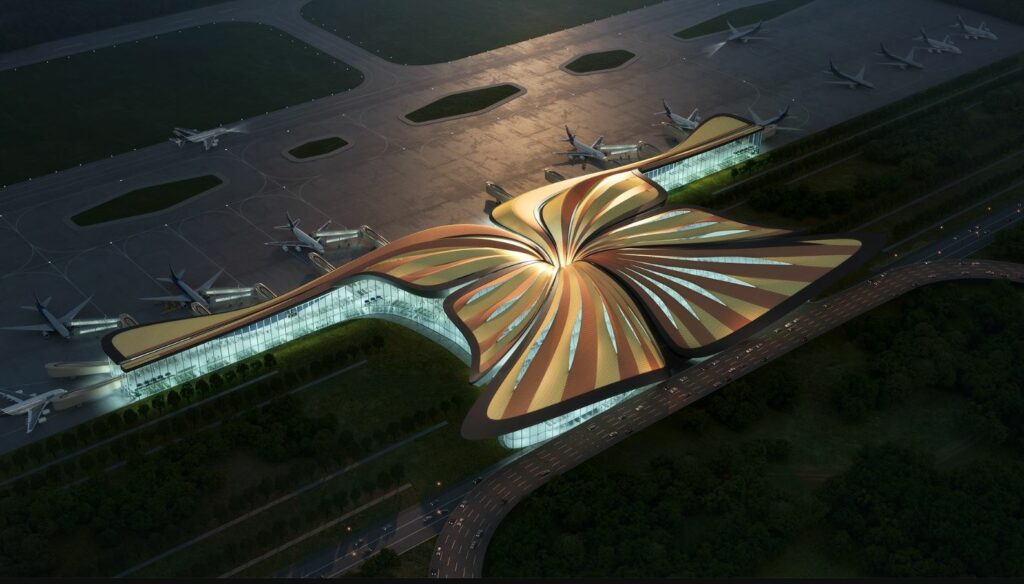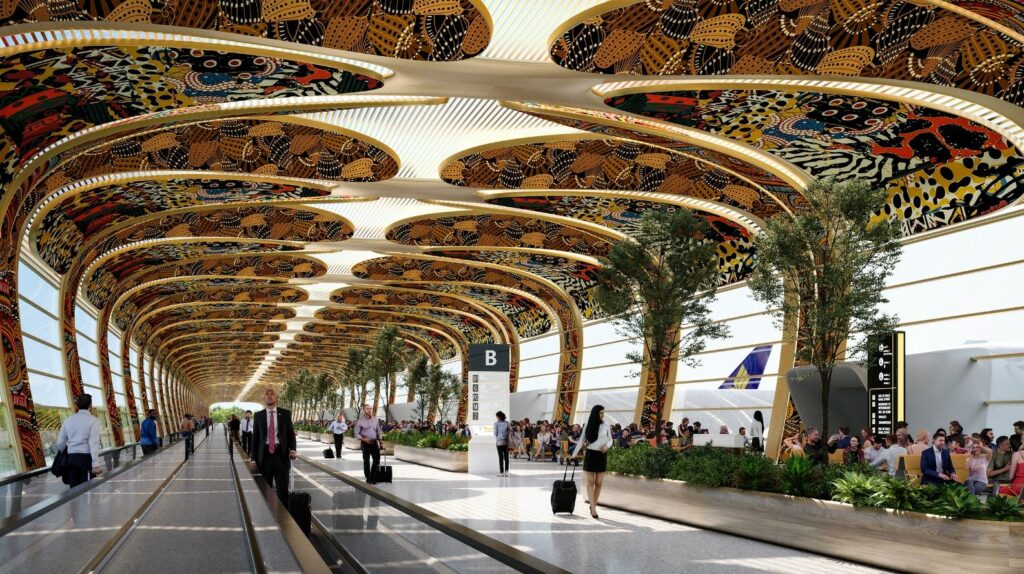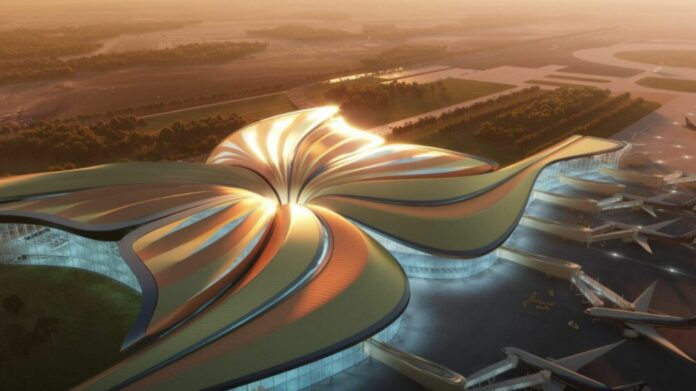Adani, the Indian firm at the center of a significant Sh260 billion project to revamp Jomo Kenyatta International Airport (JKIA), has recently unveiled an architectural design concept inspired by the stunning beauty of Kenya’s butterflies.
This announcement comes on the heels of government clarifications indicating that no formal agreement has been finalized with Adani’s local subsidiary. The proposed deal has sparked considerable opposition, particularly from airport workers, leading to protests that disrupted operations at Kenya’s busiest air hub. Moreover, a temporary court order has been issued to halt the project following a lawsuit filed by the Kenya Human Rights Commission (KHRC) and the Law Society of Kenya (LSK).
Highlights
- Butterfly-inspired Design: The new terminal design draws inspiration from the symmetry and elegance of butterfly wings, creating a visually striking aesthetic.
- Legal Challenges: A court order has paused the project due to concerns over governance, transparency, and the responsible use of public funds.
- Sustainability Focus: The design incorporates eco-friendly features and promotes biodiversity through butterfly gardens and educational installations.
Design Inspired by Nature
The architectural concept unveiled by Adani showcases a terminal that emphasizes flowing, curved forms reminiscent of butterfly wings. This innovative design aims to create a seamless and dynamic experience for travelers, steering clear of rigid structures. Instead, the layout features organic shapes that guide passengers through the space naturally.

Kenya’s rich biodiversity significantly influences this design approach. The terminal’s décor intricately weaves butterflies, symbolizing transformation and freedom in Kenyan culture. Artistic representations of native species, including the African monarch butterfly, feature prominently, enhancing the airport’s cultural significance.
READ ALSO:Adani Says They Paid Ksh. 6.5M to Kenyan Gov’t for JKIA Takeover Proposal
Enhancing Traveler Experience
One of the most striking features of the proposed terminal is its expansive glass façades and skylights that allow natural light to flood the space. Additionally, this design element creates a bright, airy atmosphere reminiscent of a butterfly in flight, providing travelers with a sense of openness and tranquility.

In addition to aesthetic appeal, the terminal aims to promote sustainability through biophilic design elements. Integrated butterfly gardens and the use of indigenous plants will create serene, nature-filled spaces within the terminal. These features not only enhance the beauty of the environment but also support local ecosystems by promoting biodiversity.
Adani emphasizes that travelers will have opportunities to engage with butterfly-themed art installations and learn about Kenya’s diverse ecosystems through interactive educational displays. These installations will include information about various butterfly species and their roles in the environment, making the terminal not just a transit point but an educational experience.
Related Stories
Adani Group Denies Fast-Tracking JKIA Deal Approval in 17 Days
Gov’t Dismisses JKIA Sale Rumors with Adani
Ongoing legal and operational challenges
While the butterfly-inspired design has garnered significant attention and excitement, the deal’s future remains uncertain due to legal challenges. The KHRC and LSK argue that JKIA is a crucial national asset, and the proposed agreement undermines principles of good governance, accountability, and transparency. They contend that the deal may jeopardize public funds and diminish the airport’s strategic importance.
In response to concerns raised by various stakeholders, the National Assembly has ordered a forensic audit of the agreement between the Kenya Airports Authority (KAA) and Adani Holdings. Moreover, this parliamentary directive underscores the seriousness of the situation and aims to ensure that all financial implications of the project are thoroughly examined.
As the court case progresses, the future of the proposed butterfly-inspired terminal design hangs in the balance. The outcome of this legal battle will be pivotal in determining whether this ambitious vision will materialize, shaping the future of JKIA and its potential transformation into a unique travel hub that celebrates Kenya’s natural beauty.
